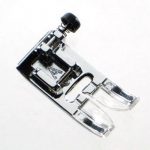
A Foot
You can get away with most projects with only one sewing foot – but geez don’t some of these specialty feet make jobs so much easier?! All sewing machines will have a straight and a zig zag stitch, with some variations in between at the most basic level. Your most common sewing foot will be your Zigzag Foot or ‘A’ Foot. It has both a vertical and horizontal slot to accommodate needle movement in either direction.
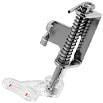 PD-H
PD-H
Whether it’s darning over a tear or using your machine to create free-motion quilt designs, the PD-H foot is an absolute must have for quilters. The clear view foot with guide presses down on your fabric via a spring, providing stability and a neater finish while presser foot pressure is reduced and feed dogs are dropped. Also use with applique to attach embellishments and labels.
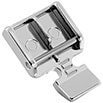
E Foot
But what else? We buy sewing machines for mending and making clothing, accessories and decor crafts. Zippers feature in all areas of craft and sometimes it’s not as simple as sewing two pieces of fabric together. For these, there are several variations of specially designed feet. With the Skyline S5 you receive the common Zipper ‘E’ Foot, with a clip-bar on both the left and right allowing you to get as close as possible to either side of a zipper track.
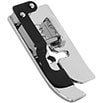
G Foot
There’s almost a foot for everything! The Skyline S5 comes with a Blind Hem Foot, with a centre guide and rivets in the underside tostitch consistently a blind hem – perfect for trousers and skirts.
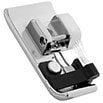
C Foot
Don’t have an overlocker? Not to worry! While some sewists use a simple zig zag stitch to finish edges and prevent them from fraying, this Overedge foot provides the forming fingers to keep fabric from gathering and a built-in guide to help you sew over the fabric evenly. Just cut your edges neatly and use this foot to achieve clean finishes for your projects!
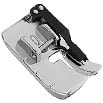 O Foot
O Foot
Struggling to keep seams straight? This 1/4″ seam foot is the most popular seam guide accessory for achieving straight even seams every time! The guide attachment extended before the foot guides your fabric in at a consistent width. Never unpick your seams again!
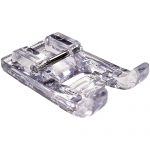
F Foot
What about more decorative projects? You might find that a nice satin stitch along the hem may be a nice touch, or are looking to use one of the many applique stitches to attach patches, accent clothes and bags but they just don’t work properly with the standard A foot… For these we use a Satin Stitch or ‘F’ Foot, designed to be a clear view short nosed foot for a better finish.
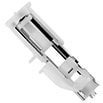
R Foot
What’s this about ‘automatic buttonholes’? Yes! This machine can do a buttonhole in one easy step. Unlike older machines that force you to pencil out the measurement and turn the dial at every corner, the automatic buttonhole ‘R’ foot uses your button of choice at one end to automatically size up the perfect buttonhole and frames it up for easy sewing, all it takes is lowering the button sew lever and away you go! For difficult to sew fabrics, there’s also a stabiliser provided.
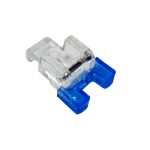 T Foot
T Foot
Buttons are painstakingly tedious sometimes, so Janome created this simple button-sew foot for use with simple flat buttons. Holding your button in place, the Button Sew Foot uses specific settings to line up you button and sew directly through the holes and onto your garment. Perfect for shirts and button down dresses where there’s just too many to sew by hand…
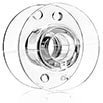
Bobbins
Now one thing we can never have too many of are the Janome Universal Plastic Bobbins. This is the little spool that you use in the bottom of your machine to help form the stitch, and you use the bobbin winder on top of your machine to wind your choice of thread so your colours match on both sides of the fabric. Most modern machines prefer the use of plastic bobbins because unless advised otherwise, metal bobbins can damage your machine.
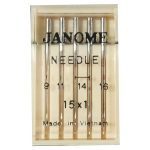
Needles
You can’t sew without needles! Janome include a small pack of mixed sharp needles to help you get started. Sharps are your standard sewing needle, and range in sizes depending on the weight of fabric you need them for. The average sewing fabric uses a size 14 sharp needle, and it’s recommended that you change your needle every 6-8 sewing hours – even if it’s not broken they can go blunt! There are many types too, so don’t forget to browse other needle types for your next project.
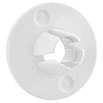
Spool Holders
Most sewing machines will now provide horizontal spool caps or holders, so the thread winds off the spool the same way it has been wound on, in an even and consistent manner. To keep the spool from dancing around, Janome provides spool caps to affix your thread and help it unwind properly. You receive both small and large spool caps, but we recommend the small for most threads as it doesn’t interfere with the path of smaller spools.
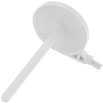
Additional Spool Pin
Why do you need an additional spool pin? Sometimes you might want to mix two coloured threads together, or make use of a twin or triple needle. Where are you going to put that extra spool? Janome includes an additional spool pin with the Skyline S5 which you insert into a small slot on the top of the machine. Simple hold all your desired threads together and draw the through the machine as normal and thread the needles via left and right.
If you have any other enquires about these items, just let us know and we can help you identify them and their potential uses.



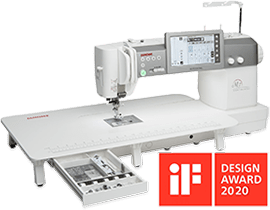
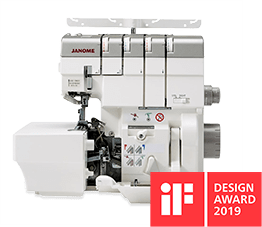
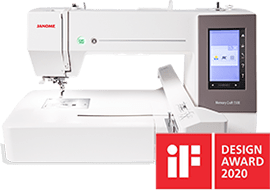
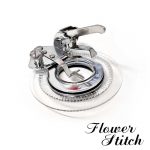
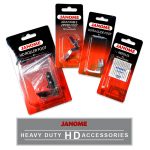
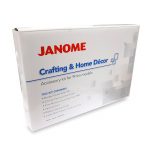
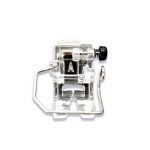
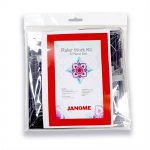
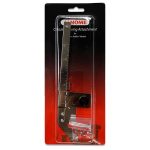
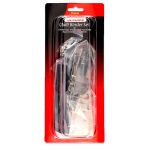
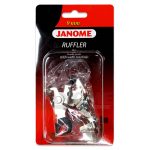
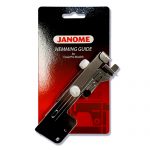
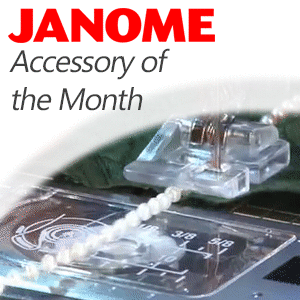
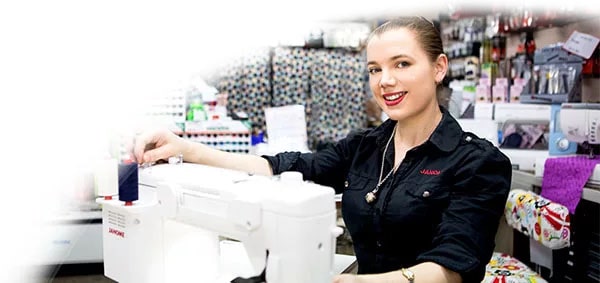
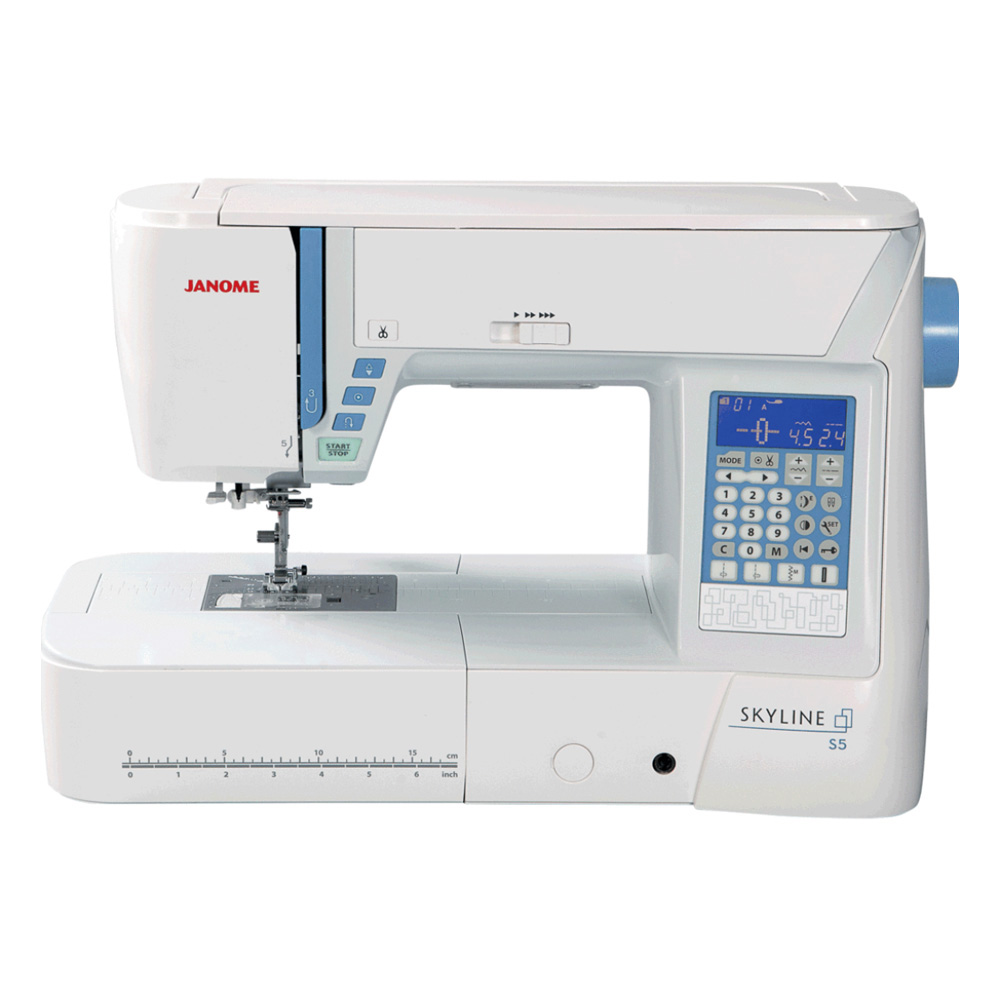
 or 4 payments of
or 4 payments of 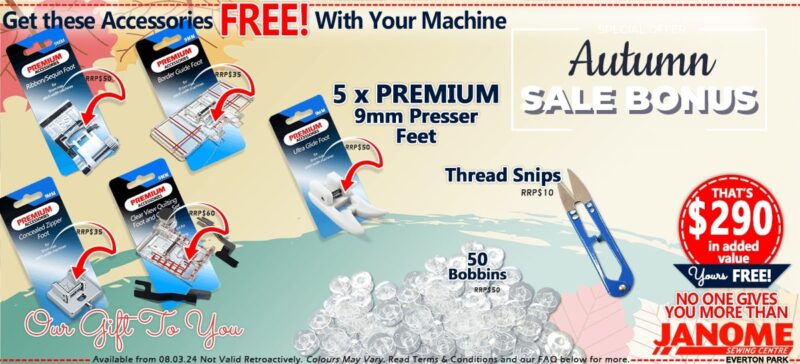 Janome Skyline S5
Janome Skyline S5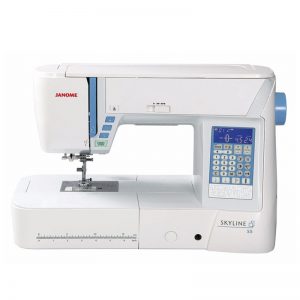


 PD-H
PD-H


 O Foot
O Foot






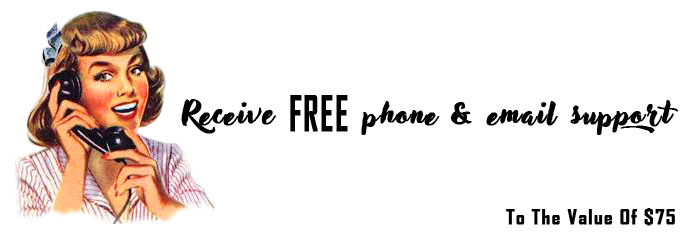



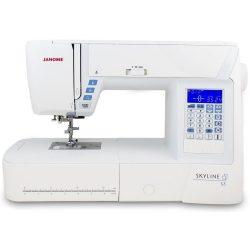

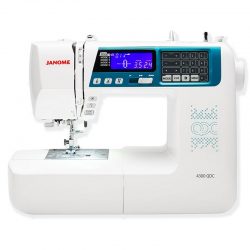
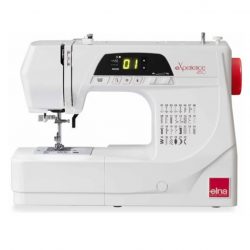
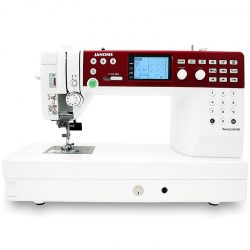
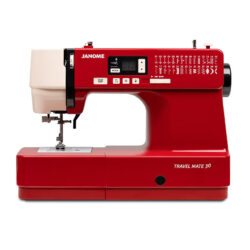
There are no reviews yet.